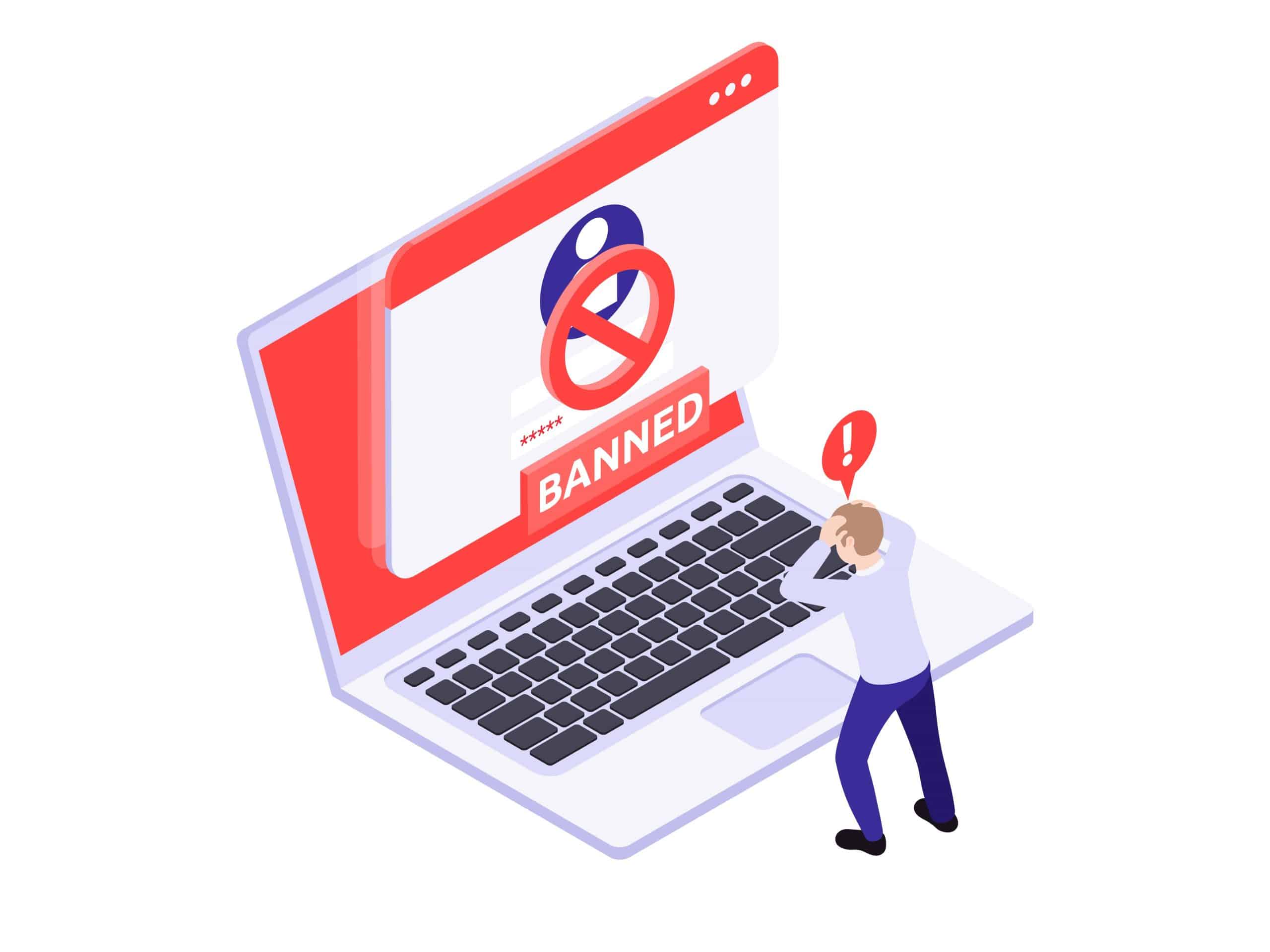Web scraping is a technique that allows you to extract data from websites to use for your purposes. It’s used by businesses and researchers alike. For example, a company might want to find out about the products or prices of its competitors. Or, a university researcher might want to find out how well different drugs work or how people use social media sites like Facebook.
However, there are some problems with this method. If the site you want to scrape doesn’t have any APIs or uses techniques to stop scraping, you won’t be able to do much with it. Let’s look at how companies try to stop scraping and how you can get around them.
What are Anti-Scraping Techniques?
Scraping is the act of copying content from a website. Making an archive of a website that is going away or stealing information from sites are some reasons for scraping.
One of the biggest issues with scraping is that it can put companies at risk for lawsuits. In some cases, it’s illegal to scrape content from another site (like if it violates copyright laws). In other cases, it’s legal but still risky. The company whose content you copied could sue you; if they win, you’d have to pay them damages.
Many companies use anti-scraping techniques to protect themselves against these types of lawsuits. When someone tries to scrape their information, these programs or scripts on their websites can tell and stop them from getting to certain parts of the site.
Anti-Scraping Techniques are a form of defense against automated data extraction. Websites that want to protect their users’ privacy or keep the information they gather about their users secret can use them.
Some common examples of Anti-Scraping Techniques include:
IP Tracking and Blocking
IP tracking is a way for website owners to find out who has been coming to their site and from what IP address. This can be used to block anyone from accessing the website. It can also tell where the request for the page came from.
This could be the reason why your favorite website stopped working for you all of a sudden. The website’s owner may have seen that your IP address is always trying to get in and blocked it.
AJAX
AJAX is an acronym for Asynchronous JavaScript and XML. It is a technology that makes web apps more interactive and dynamic. AJAX uses requests and responses to get data from a server at different times. The most important thing to know about AJAX is that it can only load parts of a page. Instead, it will only refresh a small part of the page.
Web scrapers have had trouble with Ajax. This is because most popular web scraping tools don’t run JavaScript and aren’t good for scraping Ajax-based websites. Websites that use AJAX load data after the HTML. If you use scraping tools to send requests, the HTML will be sent back without the needed data.
Browser Fingerprinting
Browser fingerprinting is a way for a website to find out what browser you’re using and what operating system you’re on. When you go to a website, it will load content that works with your browser and operating system. So, if you were using an older version of Internet Explorer, for example, the website would show you an error message saying that it doesn’t work with that version.
This method is tricky because it depends on finding out what kind of device you’re using by looking at your browser’s user agent string. It’s not possible to change this manually. Instead, you should use a tool that does it for you.
CAPTCHA
“Completely Automated Public Turing test to tell Computers and Humans Apart” is what CAPTCHA stands for. It’s a test to see if input comes from a person or a computer program. CAPTCHAs are often used to automatically stop bots from filling out forms, signing up for newsletters, logging into accounts, etc.
CAPTCHAs might have messed up text or pictures. When you go to a site that uses CAPTCHAs, you will be asked to type the distorted letters and numbers into a box before going further.
CAPTCHAs are easy for people to read but hard for machines to figure out. This is why many web developers use them as an easy way to stop bots from getting to their content.
Login Pages
A login page is a page on a website where users must enter their login information before seeing anything else on the site. These pages can stop people from getting in without permission. Moreover, these stop bots and scrapers from getting resources. They must make an account if they want to access any information.
Honeypot Traps
A honeypot trap uses fake information to trick a scraper and stop it from getting to the real data. The honeypot is usually placed before the real data and is designed to be easily accessible. It could be a fake login page or something else. You can also put honeypots after the real content.
Site owners can use honeypots to catch scrapers and improve their security. They can also use them as part of an automated process that gets data from search engines and other sites, cleans up any scraped data, and stores it in their database for later use.
Combination of the techniques above
There are many different types of anti-scraping techniques, varying in effectiveness. Some are easy to bypass, while others are much more difficult. Most of the time, website owners will need to use more than one of these techniques at the same time to protect their site from scraping.
How to bypass Anti-Scraping Techniques?
There are several ways to bypass anti-scraping techniques, here are some of them:
Follow Best Practices
Bad scraping practices can impact the site’s performance. This is why websites block your scraper. However, scraping responsibly doesn’t harm the web, so you can keep scraping without getting blocked.
The following are the best web scraping practices to follow:
1. Read the robot.txt file
When you want to get around anti-scraping methods, the first thing you need to do is to read the robot.txt file. This file will tell you what the website owner wants you to know about it and how to use it. It will also tell you what you shouldn’t do on the site, such as scraping data behind a login or making accounts without the owner’s permission.
2. Imitate human behavior
To bypass anti-scraping techniques, it’s important to imitate human behavior when working with websites with security systems against scrapers and bots. You should never automate your actions on these websites. They will see this as non-human behavior and block your IP address from reaccessing their site. Instead, try using keyboard shortcuts or mouse clicks instead of automated commands when navigating these sites so that they think you’re human rather than a bot.
3. Avoid scraping data behind a login
If the site or service tracks your login status with cookies, wait to scrape right after logging in. This can be done by managing sessions or keeping data from previous requests in a cache.
4. Think like the security system
You can do this by looking into the past methods, and tools websites have used to find scrapers. If you know what companies use to keep people from getting into their websites, you can figure out how to get around them.
Rotate User Agent
Using a user agent switcher is one of the most common ways to stop scraping. A user agent switcher will change your browser’s user agent so that it looks like a different browser.
User agents are strings that tell you what browser and operating system a visitor uses. They are sent with every HTTP request, so they can be used to find and block unwanted requests.
When a website sees you using an automation tool, it may block your access to its content. This can be done by blocking your IP address or finding your user agent string. By changing your user agent, you can make sure that sites whose content you want to see won’t block you.
Use Premium Proxies
The best way to bypass a website’s anti-scraping techniques is by using proxies. A proxy server is a computer that helps your computer connect to another server. It works like a middleman. When you ask for data from another server, it gets it for you, then sends it back to your computer so you can see it.
In this case, proxy servers are helpful. They let you get around any restrictions or blocks on your website by connecting to it through the proxy server instead of directly. This means that the website’s anti-scraping methods won’t affect you. This is because they only work when someone tries to access the site directly, not through a proxy server.
Even though there are a lot of free proxies, they have some problems, like collecting your data and being slow. Also, many people use these free proxies, so they have already been flagged or banned. Instead, you should consider paying for a proxy service that ensures privacy, security, and good performance.
Conclusion
Web scraping is a great way to collect data from websites. But it can be used and abused just like any other tool. To stop this from happening, website owners use anti-scraping techniques to stop unwanted programs from accessing their content.
There are a few ways to get around these anti-scraping techniques. However, only a few really work: following best practices, rotating your user agent and using premium proxies.



